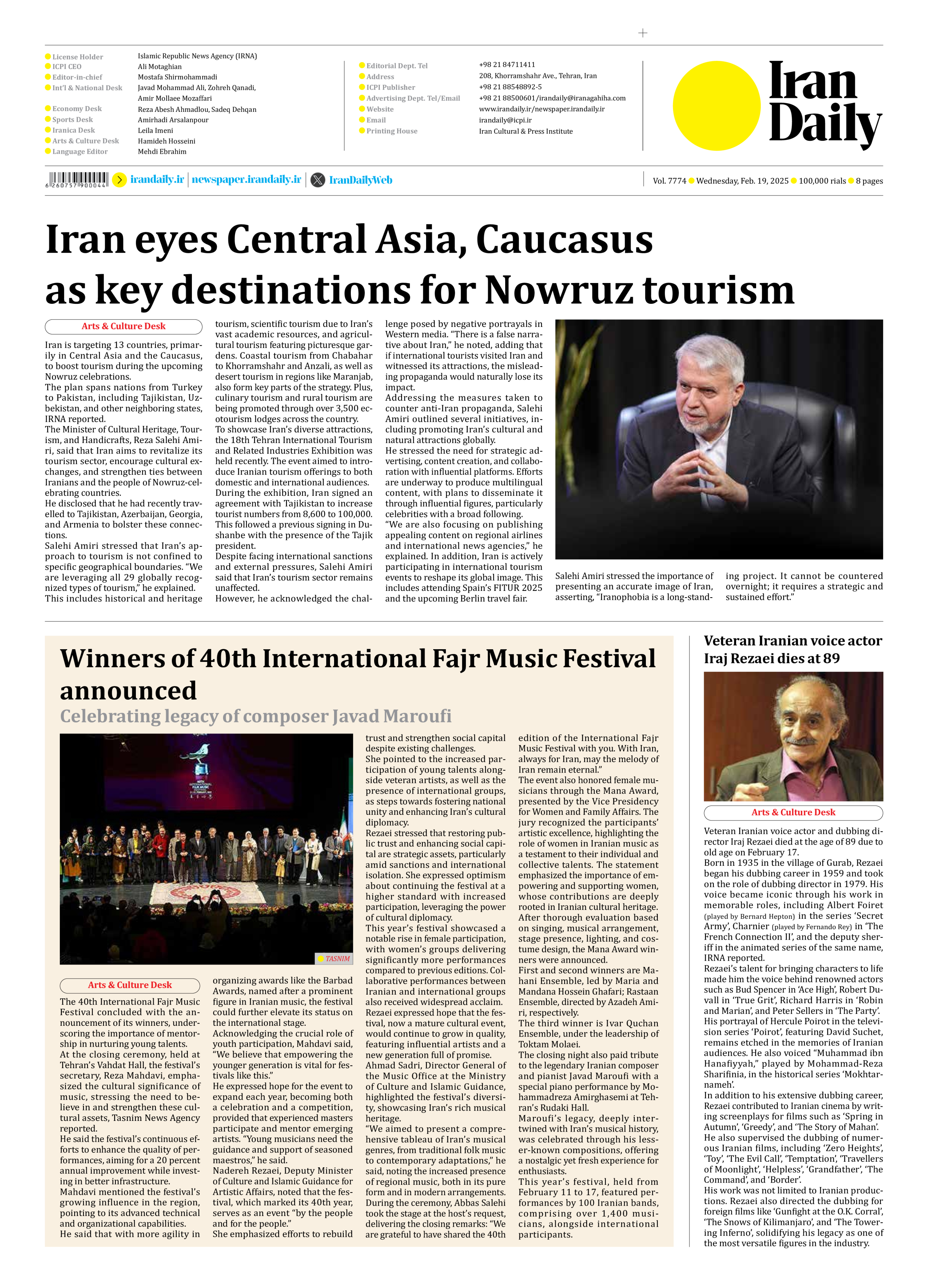
Iran eyes Central Asia, Caucasus as key destinations for Nowruz tourism
Iran is targeting 13 countries, primarily in Central Asia and the Caucasus, to boost tourism during the upcoming Nowruz celebrations.
The plan spans nations from Turkey to Pakistan, including Tajikistan, Uzbekistan, and other neighboring states, IRNA reported.
The Minister of Cultural Heritage, Tourism, and Handicrafts, Reza Salehi Amiri, said that Iran aims to revitalize its tourism sector, encourage cultural exchanges, and strengthen ties between Iranians and the people of Nowruz-celebrating countries.
He disclosed that he had recently travelled to Tajikistan, Azerbaijan, Georgia, and Armenia to bolster these connections.
Salehi Amiri stressed that Iran’s approach to tourism is not confined to specific geographical boundaries. “We are leveraging all 29 globally recognized types of tourism,” he explained.
This includes historical and heritage tourism, scientific tourism due to Iran’s vast academic resources, and agricultural tourism featuring picturesque gardens. Coastal tourism from Chabahar to Khorramshahr and Anzali, as well as desert tourism in regions like Maranjab, also form key parts of the strategy. Plus, culinary tourism and rural tourism are being promoted through over 3,500 ecotourism lodges across the country.
To showcase Iran’s diverse attractions, the 18th Tehran International Tourism and Related Industries Exhibition was held recently. The event aimed to introduce Iranian tourism offerings to both domestic and international audiences.
During the exhibition, Iran signed an agreement with Tajikistan to increase tourist numbers from 8,600 to 100,000. This followed a previous signing in Dushanbe with the presence of the Tajik president.
Despite facing international sanctions and external pressures, Salehi Amiri said that Iran’s tourism sector remains unaffected.
However, he acknowledged the challenge posed by negative portrayals in Western media. “There is a false narrative about Iran,” he noted, adding that if international tourists visited Iran and witnessed its attractions, the misleading propaganda would naturally lose its impact.
Addressing the measures taken to counter anti-Iran propaganda, Salehi Amiri outlined several initiatives, including promoting Iran’s cultural and natural attractions globally.
He stressed the need for strategic advertising, content creation, and collaboration with influential platforms. Efforts are underway to produce multilingual content, with plans to disseminate it through influential figures, particularly celebrities with a broad following.
“We are also focusing on publishing appealing content on regional airlines and international news agencies,” he explained. In addition, Iran is actively participating in international tourism events to reshape its global image. This includes attending Spain’s FITUR 2025 and the upcoming Berlin travel fair.
Salehi Amiri stressed the importance of presenting an accurate image of Iran, asserting, “Iranophobia is a long-standing project. It cannot be countered overnight; it requires a strategic and sustained effort.”







